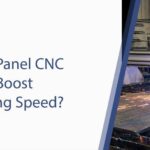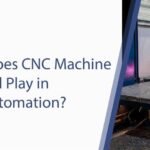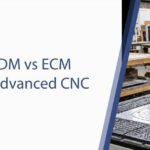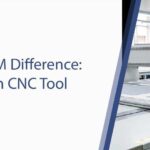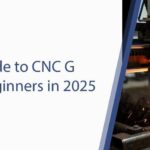In the intricate dance of modern manufacturing, the CNC machine is the star performer.
Its powerful motors provide the brawn, its rigid frame the stability, and its sharp tooling the precision.
But orchestrating this entire performance—dictating every move, every turn, and every cut with microsecond accuracy—is its single most vital component: the CNC controller.
The controller is the machine’s central nervous system and brain, all rolled into one. It interprets the digital blueprint (G-code) and translates it into the flawlessly synchronized electrical signals that command the machine.
The type of controller at the heart of a CNC machine fundamentally defines its capabilities, its flexibility, its intelligence, and ultimately, its value.
As a world leader in the design of next-generation control systems, Radonix believes that understanding the controller is the key to unlocking a machine’s true potential.
This in-depth guide will demystify the different types of CNC controllers, explore their core architectures, weigh their respective strengths and weaknesses, and illuminate why the future of manufacturing control is open, intelligent, and PC-based.
What Does a CNC Controller Actually Do?
Before we categorize the types, it’s essential to appreciate the immense responsibility a controller shoulders.
Its job is far more than just reading a file. A CNC controller performs several critical, real-time functions:
- Program Interpretation and Path Planning: It reads the lines of G-code and M-code, parsing the instructions for motion, speed, and auxiliary functions. Crucially, it performs complex mathematical calculations for interpolation, planning a smooth, precise path between coordinates, whether it’s a straight line (linear interpolation) or a perfect arc (circular interpolation). Advanced controllers perform “look-ahead,” processing hundreds or thousands of lines in advance to optimize velocity and acceleration, preventing jerky movements and improving surface finish.
- Real-Time Motion Control: This is the controller’s most critical task. It must send precisely timed electrical pulses (for stepper motors) or analog/digital signals (for servo motors) to the motor drives. These signals must be delivered with microsecond precision. Any timing inconsistency, known as “jitter,” can result in inaccurate cuts and poor part quality. This is why a standard desktop computer operating system, by itself, is wholly unsuitable for direct machine control.
- Input/Output (I/O) Management: A CNC machine is not just motors. It’s an ecosystem of sensors, switches, and actuators. The controller manages all of this I/O, which includes:
- Inputs: Reading signals from limit switches (to prevent crashes), tool probes, door interlocks, and operator panel buttons.
- Outputs: Turning on and off the spindle, coolant pumps, tool changers, and other auxiliary equipment. This functionality is handled by an integrated Programmable Logic Controller (PLC), a core feature of any industrial-grade controller.
- User Interface (HMI) Management: The controller drives the screen and interprets input from the control panel, providing the operator with a window into the machine’s operations and a means to command it.
The Great Architectural Divide: Types of CNC Controllers
CNC controllers can be classified into two primary architectural families, with a third, hybrid category emerging.
The choice between them represents a fundamental difference in philosophy regarding power, flexibility, and cost.
1. The Dedicated Hardware CNC Controller
The traditional and long-standing champion of the factory floor, the dedicated hardware controller is an all-in-one, proprietary “black box.” Industry titans like Fanuc, Siemens, and Heidenhain built their reputations on this architecture.
- Architecture Explained: In this model, the computing hardware (CPUs, memory, I/O boards) and the software (the proprietary real-time operating system and control logic) are designed as a single, fully integrated, closed unit. The hardware and software are inseparable and specifically engineered for the sole purpose of machine control.
- Strengths:
- Rock-Solid Reliability: Because they are purpose-built and hardened for the industrial environment, dedicated controllers are renowned for their stability and long service life. They are designed to withstand vibrations, electrical noise, and temperature fluctuations.
- Turnkey Solution: They are typically sold as a complete, pre-configured package with a new CNC machine, offering a “plug-and-play” experience with guaranteed compatibility.
- Weaknesses:
- Inflexible and Proprietary: The closed architecture is the most significant drawback. Customization is exceptionally difficult and expensive. You are locked into the manufacturer’s ecosystem for everything—from the HMI layout to hardware upgrades and repairs. Adding a new, non-standard sensor or function can be a monumental task.
- High Total Cost of Ownership: These units carry a high initial price tag. Furthermore, repairs are costly, as you must source proprietary parts from the original manufacturer. Upgrading the entire controller is often as expensive as buying a new one.
- Technological Stagnation: The development cycle for proprietary hardware is much slower than the consumer PC market. As a result, dedicated controllers often lag in terms of processing power, memory, and modern connectivity options like standard USB or Wi-Fi.
- Complex and Non-Intuitive: Each brand has its own unique operational logic and interface, often requiring brand-specific training for operators and maintenance staff.
2. The PC-Based CNC Controller
The PC-based controller represents the modern, modular, and software-defined approach to machine control. It leverages the massive economies of scale, rapid innovation, and familiar interface of the personal computer world and combines it with specialized hardware to create a powerful and adaptable control solution.
- Architecture Explained: This is not simply using a desktop PC to run a machine. A true PC-based control system is a sophisticated, multi-part architecture:
- The PC: An industrial or standard personal computer acts as the “front-end.” It runs the Human-Machine Interface (HMI) software, handles program storage, and performs high-level tasks like G-code visualization.
- The Motion Control Card: This is the specialized, real-time heart of the system. It is a dedicated hardware board that plugs into the PC’s motherboard (e.g., via a PCIe slot) or connects externally. This card, and its onboard processor (DSP), takes the commands from the PC software and generates the ultra-precise, jitter-free timing signals required for perfect motion control.
- The Control Software: This is the software that runs on the PC, providing the user interface and communicating with the motion card.
- Strengths (The Radonix Advantage): Radonix is a pioneer and perfecter of this architecture. Its benefits directly address the weaknesses of the dedicated model.
-
- Unmatched Flexibility and Open Architecture: This is the cornerstone of the PC-based approach. The software-driven HMI can be fully customized. Machine builders can create bespoke interfaces for their equipment. End-users can add buttons for custom macros, integrate live camera feeds, or display digital setup sheets. The system can be adapted to any need.
- Superior Processing Power: By harnessing the power of modern multi-core PC processors (Intel, AMD), these controllers can handle incredibly complex calculations. This translates to better 5-axis kinematics, more extensive look-ahead for smoother high-speed machining, and faster program processing.
- Exceptional Connectivity and Industry 4.0 Readiness: With standard Ethernet, Wi-Fi, and USB ports, PC-based controllers are built for the modern factory. They can be easily networked for remote monitoring, centralized program management, and data collection for production analytics.
- Lower Total Cost of Ownership: They utilize Commercial Off-The-Shelf (COTS) PC components. If a monitor, hard drive, or even motherboard fails, it can be replaced with a readily available, affordable part, drastically reducing maintenance costs and downtime.
- Intuitive and User-Friendly: A familiar Windows-based environment significantly lowers the training barrier for new operators, making them productive faster.
3. The Embedded CNC Controller
An embedded controller occupies a middle ground. It consists of a single board computer (SBC) or a system-on-a-chip (SoC) where the processor, memory, and I/O are all on one compact board running a dedicated control program (often a form of Linux).
While more “open” than a dedicated controller, they are typically less powerful and have a less sophisticated HMI than a full PC-based system.
They are often found in smaller, less complex machines or used to control a specific sub-system.
The Radonix Architecture: The Apex of PC-Based Control
Radonix has engineered a complete ecosystem that embodies the pinnacle of PC-based control.
Our solution is not just a collection of parts; it’s a seamlessly integrated platform where our advanced control software is perfectly matched with our high-performance, multi-axis motion control cards.
The Radonix difference lies in:
- Integrated, Powerful PLC: Our controllers feature robust, built-in PLC functionality that can be easily programmed with standard ladder logic. This allows you to manage all machine I/O—from simple coolant pumps to complex automatic tool changers—without the expense and complexity of a separate PLC module.
- Scalable, Multi-Axis Control: The Radonix platform is inherently scalable. The same powerful software can drive a simple 3-axis router or a complex 6-axis robotic arm, providing a unified control solution across your entire factory floor. Our PC-Pro series is a testament to this high-level capability.
- Real-Time Performance, Guaranteed: We solve the real-time problem. Our motion cards and optimized software drivers create the “hard real-time” environment necessary for flawless motion, ensuring your machine produces perfect parts, every time.
- A Commitment to Openness: Our architecture is designed for machine builders and innovators. We provide the tools and support needed to customize and extend the controller’s functionality, allowing our customers to create unique and competitive machines.
How to Choose the Right CNC Controller for Your Needs
- For a Standard, High-Volume Machine with No Customization Needs: A dedicated controller from a major brand can be a reliable, albeit expensive, choice.
- For Maximum Flexibility, Performance, and Future-Proofing: A PC-based controller is the definitive modern solution. It’s the clear choice for custom machine builders, R&D applications, educational institutions, and any manufacturer who wants to optimize their workflow and integrate with Industry 4.0.
- When evaluating a PC-Based System, ask: Does it use a dedicated motion control card for real-time processing? How customizable is the software? What level of support is offered?
Conclusion
The CNC controller is the single most important factor determining your machine’s intelligence, adaptability, and long-term value.
The era of being locked into a closed, proprietary system is over.
The modern manufacturing landscape demands the flexibility, power, and connectivity that only a world-class PC-based architecture can provide.
Choosing a controller is not just a technical decision; it’s a strategic one. It’s an investment in the future capability of your operations.
By embracing an open, powerful, and adaptable PC-based platform, you are not just buying a controller—you are acquiring a platform for limitless innovation.
Your machine is a significant investment. The controller you choose determines its ultimate return. Contact Radonix today to discover how our industry-leading PC-based controllers can unleash the true performance and intelligence of your manufacturing operations.
Contact Us:
- E-Mail: info@radonix.com
- Phone: +90 (553) 920 5500


